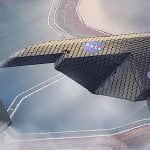
Some of the best jobs and wages to be found in Canada are in the broad group of engineering and applied science technicians and technologists. These highly skilled technical workers earn well above the average wage for Canada and face generally positive career prospects, especially as baby boomers continue to retire at a faster rate. The engineering and applied science technicians and technologists category includes a wide diversity of jobs such as chemical workers, construction estimators and inspectors, user support technicians and electrical technicians. These have seen above-average employment growth over the past fifteen years. And according to a study released by the Conference Board of Canada, the 400,000 Canadians currently employed in these jobs enjoy wages that are more than 20 per cent higher than the national average.
This broad sector of the economy has much to offer. The president of the Ontario Association of Certified Engineering Technicians and Technologists (OACETT), Bob van den Berg, said that the work is “rewarding and versatile,” and the skills required are “much sought after by employers in today’s dynamic job market.”
Wages for technicians and technologists employed in all industries are generally higher than average, but especially for industrial instrument technicians and mechanics and process operators in the energy and chemical sectors. The average weekly wage in Canada in 2013-14 was just under $900; for industrial instrument technicians and mechanics it was just over $1,500.

Employment growth has also been more than double the overall average, 3.5 per cent compared to 1.7 per cent, in certain years. User support technicians was one of the fastest growing technical occupations during the 2000s, and today, the largest technical occupation group by far is IT workers, who make up 36 per cent of all workers in the category.
More than half of all tech workers are employed in three job categories: professional, technical and scientific services, manufacturing, and public administration. Professional, technical and scientific services includes legal, accounting, engineering and architecture, design, scientific research, advertising and other related occupations. This sector has experienced enormous growth since the mid-eighties when personal and enterprise computing became the norm.

The Conference Board study concludes that tech workers in the professional services sector will fare “relatively well” in coming years as the evolution to a knowledge services economy continues.
In 2013–14, there were over 400,000 engineering and applied science technicians and technologists in Canada, under 21 occupational categories. Employment growth for this occupational group has strongly outpaced overall employment growth for Canada as a whole over the past 15 years.
Manufacturing is far from finished in Canada, the report concludes. After a painful period of restructuring and contraction in the 2000s, the number of workers employed in manufacturing has remained stable. Manufacturing GDP has increased by 7.7 per cent. Future hiring in manufacturing will be “modest,” jobs like industrial engineering and manufacturing technologists and technicians, aircraft instrument technicians and mechanics, and petroleum, gas and chemical process operators, The Conference Board says manufacturing employment levels will never recover to pre-recession levels.
What needs to happen, the report says, is that manufacturers invest in state-of-the-art technologies, not in labour-intensive processes. The future lies with increased use of automation and robotics, which boost output but not employment. The move to more sophisticated manufacturing processes will support demand for highly skilled technicians and technologists.
Canada’s construction industry, which employs about 7 per cent of the technicians and technologists in Canada, faces a mixed outlook. Construction in oil and gas industry-related structures fell by 24 per cent in 2015. Non-energy construction also faces uncertainty, though the picture is brighter. With increased industrial exports flowing from the improved US economy and weak Canadian dollar, exporters will need to expand their facilities and build new ones, but that could take time.
Construction of new office buildings, meanwhile, is expected to be down “over the next few years,” while the retail sector currently has excess capacity that needs to be absorbed, the report says. The Conference Board report makes no mention of the residential construction sector, and was prepared before yesterday’s announcement from Loblaw that it plans to build fifty new stores and renovate 150 more in 2016, investing $1 billion and creating 15,000 jobs in construction.
































